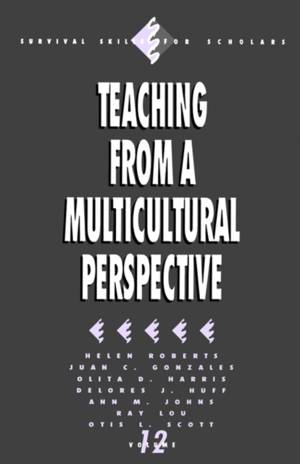
- Afhalen na 1 uur in een winkel met voorraad
- Gratis thuislevering in België vanaf € 30
- Ruim aanbod met 7 miljoen producten
- Afhalen na 1 uur in een winkel met voorraad
- Gratis thuislevering in België vanaf € 30
- Ruim aanbod met 7 miljoen producten
Zoeken
€ 114,45
+ 228 punten
Omschrijving
Teaching from a Multicultural Perspective, one of the volumes in Sage′s Survival Skills for Scholars series, is a commonsense primer for developing multicultural pedagogies, courses, curricula, and most important, institutions. Helen Roberts and her associates set out practical strategies and principles for teaching, mentoring, and fostering the academic (and personal) success of minority and nontraditional students. Although this book covers issues relating to multiculturalism on campus that may already be familiar to many of us, it nonetheless should be of interest to advisors who also teach, who are involved in teacher training, or who are involved in resource networking, and who would like to share a basic introduction to the issues with new instructors or other advisors. . . . They valuably stress the role academic advisors can play in the success of minority students. --Brady Harrison in The Journal of the National Academic Advising Association How do you welcome the growing number of culturally diverse students in your classroom without alienating, condescending, or offending them? The authors of this collaborative volume, all experienced teachers and administrators in the ethnically heterogeneous California State University system, outline how to teach "multiculturally." They suggest a set of classroom strategies, curriculum reforms, assessment tools, and mentoring relationships that work for all students, regardless of their cultural background--or yours. The authors contend that cultural diversity is an issue for all faculty members to address regardless of your discipline or the ethnic composition of your campus. With the material in this volume, you can begin to meet the challenge of the truly multicultural university.
Specificaties
Betrokkenen
- Auteur(s):
- Uitgeverij:
Inhoud
- Aantal bladzijden:
- 118
- Taal:
- Engels
- Reeks:
- Reeksnummer:
- nr. 12
Eigenschappen
- Productcode (EAN):
- 9780803956148
- Verschijningsdatum:
- 29/06/1994
- Uitvoering:
- Paperback
- Formaat:
- Trade paperback (VS)
- Afmetingen:
- 140 mm x 215 mm
- Gewicht:
- 181 g

Alleen bij Standaard Boekhandel
+ 228 punten op je klantenkaart van Standaard Boekhandel
Beoordelingen
We publiceren alleen reviews die voldoen aan de voorwaarden voor reviews. Bekijk onze voorwaarden voor reviews.











